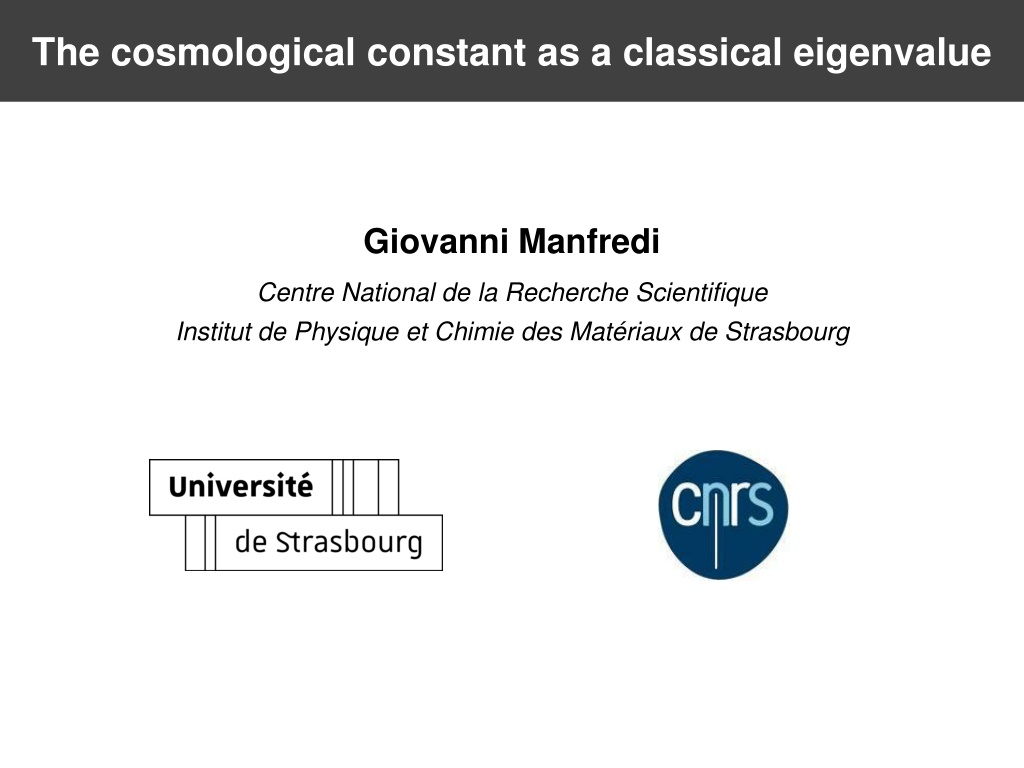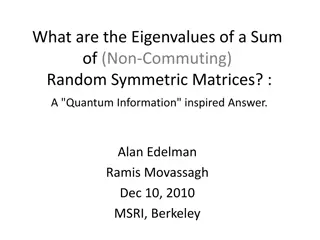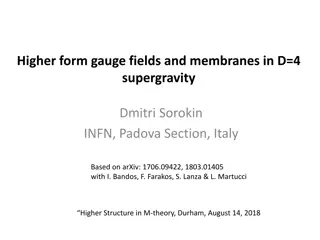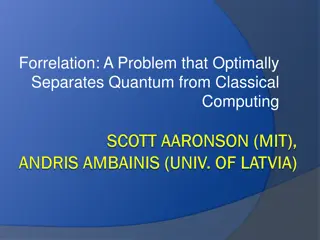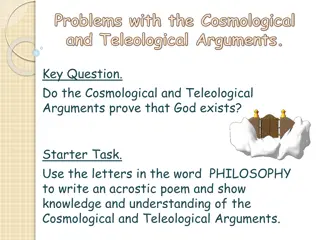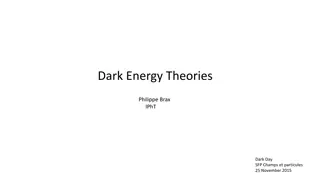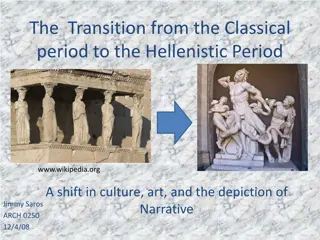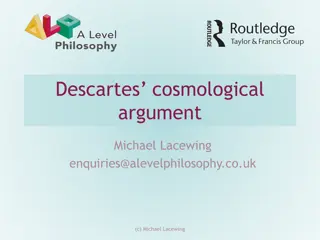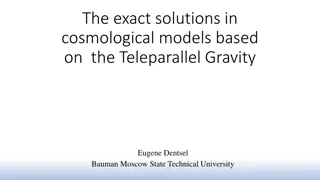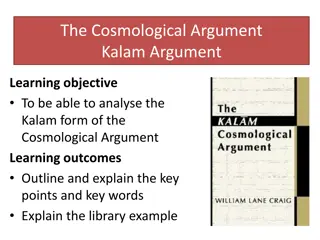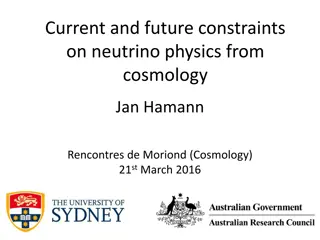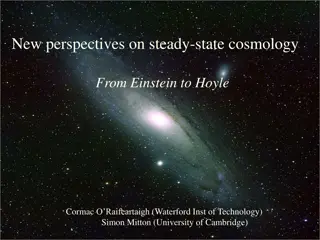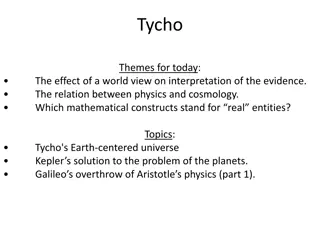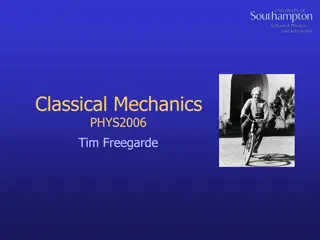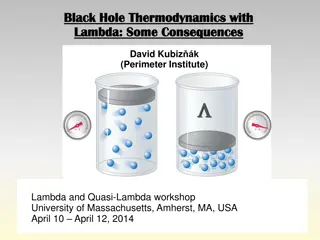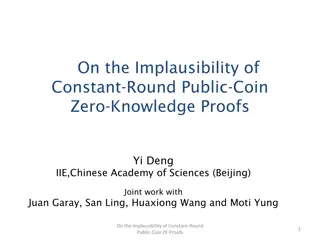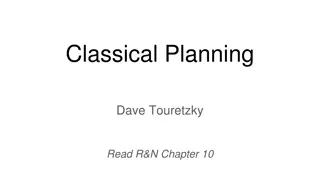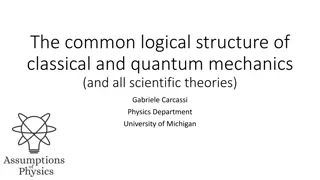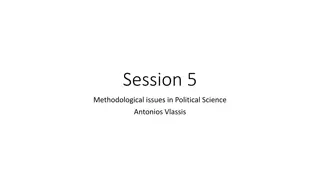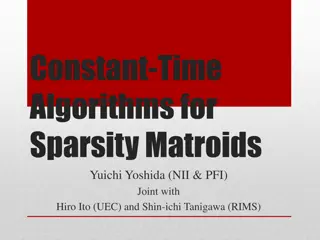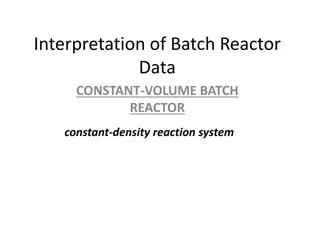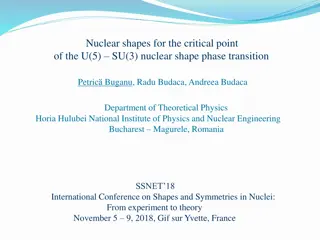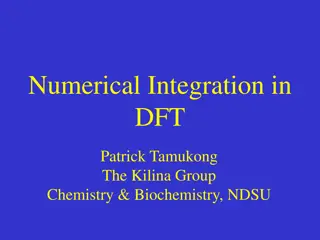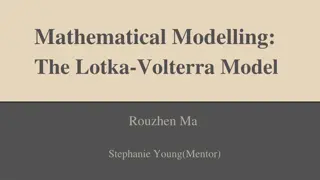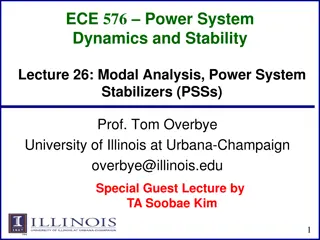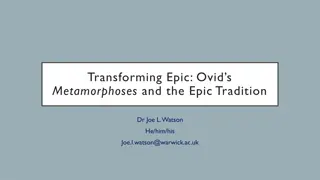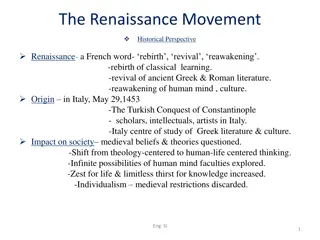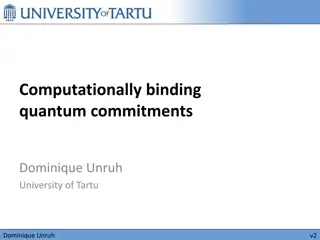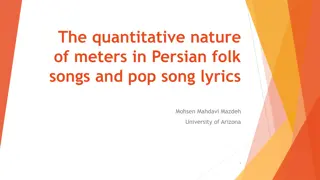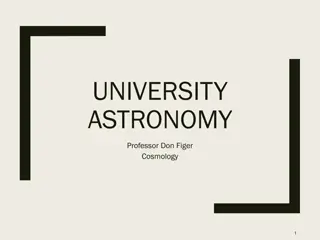Exploring the Cosmological Constant as a Classical Eigenvalue
The concept of the cosmological constant, its implications in the standard cosmological model, and its relation to dark energy are discussed in this scientific exploration. The discussion delves into whether the cosmological constant is truly constant or varies in space and time, and its role in gravitational constants and unaccelerated expansion. The study also looks at scalar gravity models and exact linearization in the context of Newtonian gravity. References to relevant studies and numerical examples are included to provide a comprehensive overview of the topic.
Download Presentation

Please find below an Image/Link to download the presentation.
The content on the website is provided AS IS for your information and personal use only. It may not be sold, licensed, or shared on other websites without obtaining consent from the author. Download presentation by click this link. If you encounter any issues during the download, it is possible that the publisher has removed the file from their server.
E N D
Presentation Transcript
The cosmological constant as a classical eigenvalue Giovanni Manfredi Centre National de la Recherche Scientifique Institut de Physique et Chimie des Mat riaux de Strasbourg
Motivation Standard cosmological model: CDM Concordant with observations, but Unobserved dark components make up ~95% of its content Origin of dark energy (cosmological constant) is unclear Linked to quantum vacuum energy? Is it even a constant, or does it vary in space and time? Is it a problem at all, or just one more gravitational constant on top of Newton sG Coasting cosmologies (e.g. Dirac-Milne, see G. Chardin s talk) Unaccelerated expansion: ? ? = ?/?0 One gets almost everything out of the single parameter H0 Milgrom s acceleration
Left or right? ??? ??? 1 2???? ???+ ???=8?? ???=8?? ?4??? ?4??? ??? is a property of spacetime, which curves even in the absence of matter is part of the energy-momentum tensor: it s a substance with peculiar properties as the eigenvalue of a (nonlinear) problem ???+8?? ?4???= ??? ?(???) = ??? No modifications of Einstein s field equations No new physics , only new interpretation Eigenvalue is determined by boundary conditions (as usual)
Scalar gravity model Newtonian gravity We want to include self-gravity (as in GR) Energy density of the Newtonian gravitational field: Not enough to simply add it to Newton s equation Correct procedure yields: With the cosmological constant included: Already written as an eigenvalue problem. Giulini, D.: Consistently implementing the field self-energy in Newtonian gravity. Phys. Lett. A 232, 165 (1997) Franklin, J.: Self-consistent, self-coupled scalar gravity. Am. J. Phys. 83, 332 (2015)
Exact linearization The above scalar model can be linearized exactly by setting: Identical to the stationary Schr dinger equation with eigenvalue /2 Just like in QM, the physically meaningful quantity is not , but rather | |2= First integral (energy): + = ?????? ????? ???? (required for Newtonian limit) (no force at r = R) Boundary conditions: Boundary conditions determine the value of . We use: ? = ?0= ?/?0(Hubble radius)
Numerical example term cancels on average the matter distribution ??
Cosmological considerations: homogeneous universe Considering a homogeneous universe at large scales, with matter density m= const, an immediate solution of the field equation is Taking m 1 proton/m3yields the correct order of magnitude for the CC (Almost trivial, but nevertheless stems from interpreting as an eigenvalue). For an almost homogeneous distribution with fluctuations: the vacuum term cancels on average the matter distribution (as long as gradients can be neglected) ?ravitationally empty universe (coasting): ? ? = ?/?0
Structure formation The Newtonian limit of the scalar model is: In co-moving coordinates, the equation of motions are: ? ? = ?/?0 and the field equation is invariant: These equations have been simulated with an N-body code in the context of the Dirac-Milne universe (G. Manfredi et al., PRD 98, 023514 (2018)) They show structure formation very similar to that of CDM and occurring on similar timescales Mass density Phase space
Galaxy rotation curves We solve the scalar field equation in the vicinity of a spherical galaxy of radius ??= 200 kpc ?? ?0= Hubble radius We can estimate the gradient of as: Potential [5002(km/s)2] rotation velocity [500 km/s] ?? = 0.136 = 0.032
Conclusion We proposed a new interpretation of the gravitational field equations as a nonlinear eigenvalue problem This conjecture relies on the following hypotheses: 1. Any gravitational field equation that incorporates self-gravity can be cast mathematically in the form of a nonlinear eigenvalue problem; 2. The cosmological constant can be interpreted as the smallest ( ground state ) eigenvalue; 3. The value of is determined by the boundary conditions; 4. In a cosmological context, the b.c. are to be set on the Hubble sphere of radius ?0. This approach: provides the correct order of magnitude for ; is compatible with structure formation on a cosmological scale; is compatible with the effects of Dark Matter on a local scale (galactic rotation curves). Open problems: Can it work for full GR? How about exact linearization? Serious comparison to observational data. G. Manfredi, Gen Relativ Gravit 53, 31 (2021). ArXiv:2102.09601
